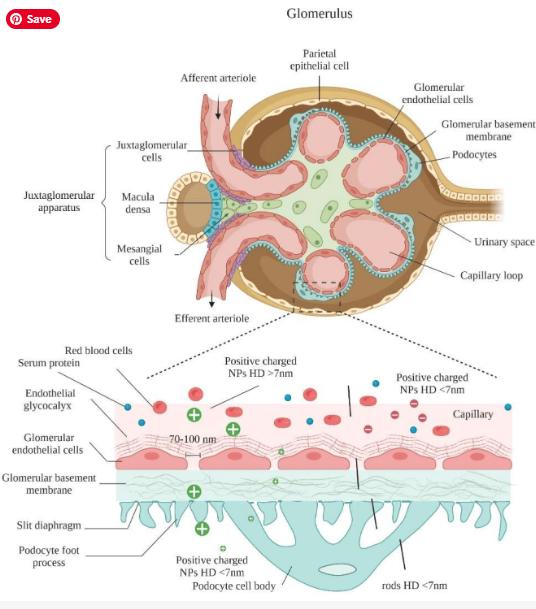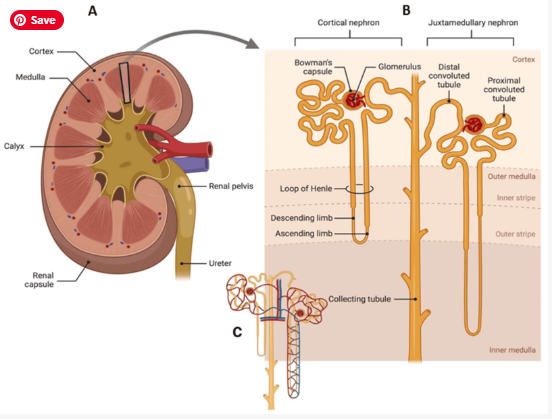Makindo Medical Notes"One small step for man, one large step for Makindo" |
|
|---|---|
| Download all this content in the Apps now Android App and Apple iPhone/Pad App | |
| MEDICAL DISCLAIMER: The contents are under continuing development and improvements and despite all efforts may contain errors of omission or fact. This is not to be used for the assessment, diagnosis, or management of patients. It should not be regarded as medical advice by healthcare workers or laypeople. It is for educational purposes only. Please adhere to your local protocols. Use the BNF for drug information. If you are unwell please seek urgent healthcare advice. If you do not accept this then please do not use the website. Makindo Ltd. |
Renal Physiology
-
| About | Anaesthetics and Critical Care | Anatomy | Biochemistry | Cardiology | Clinical Cases | CompSci | Crib | Dermatology | Differentials | Drugs | ENT | Electrocardiogram | Embryology | Emergency Medicine | Endocrinology | Ethics | Foundation Doctors | Gastroenterology | General Information | General Practice | Genetics | Geriatric Medicine | Guidelines | Haematology | Hepatology | Immunology | Infectious Diseases | Infographic | Investigations | Lists | Microbiology | Miscellaneous | Nephrology | Neuroanatomy | Neurology | Nutrition | OSCE | Obstetrics Gynaecology | Oncology | Ophthalmology | Oral Medicine and Dentistry | Paediatrics | Palliative | Pathology | Pharmacology | Physiology | Procedures | Psychiatry | Radiology | Respiratory | Resuscitation | Rheumatology | Statistics and Research | Stroke | Surgery | Toxicology | Trauma and Orthopaedics | Twitter | Urology
Related Subjects: |Pulmonary Physiology |Pancreas Physiology |Renal Physiology |Pulmonary Physiology |Cardiac Anatomy and Physiology |Coronary Anatomy and Physiology |Cardiac Electrophysiology |Cardiac Embryology |Cardiac Physiology |Cardiac Physiology |Gastrointestinal tract Physiology |Autonomic Nervous System
Renal physiology involves the study of kidney functions, including filtration, reabsorption, secretion, and excretion. The kidneys play a crucial role in maintaining homeostasis by regulating fluid and electrolyte balance, blood pressure, and waste elimination.
Key Concepts
- Anatomy of the Kidneys :
- Each kidney consists of an outer cortex and an inner medulla.
- Functional unit: Nephron, composed of a renal corpuscle and a renal tubule.
- Renal corpuscle: Includes the glomerulus and Bowman's capsule.
- Renal tubule: Consists of the proximal convoluted tubule, loop of Henle, distal convoluted tubule, and collecting duct.
- Glomerular Filtration :
- Filtration of blood plasma through the glomerular capillaries into Bowman's capsule.
- Filtration barrier: Consists of endothelial cells, basement membrane, and podocytes.
- Glomerular filtration rate (GFR): Volume of filtrate formed per minute, a key indicator of kidney function.
- Tubular Reabsorption :
- Reabsorption of water, ions, and nutrients from the filtrate back into the bloodstream.
- Occurs primarily in the proximal convoluted tubule.
- Active and passive transport mechanisms involved.
- Tubular Secretion :
- Secretion of waste products and excess ions from the blood into the renal tubule.
- Occurs in the distal convoluted tubule and collecting duct.
- Helps in maintaining acid-base balance and removing toxins.
- Concentration and Dilution of Urine :
- Loop of Henle: Establishes an osmotic gradient in the renal medulla.
- Antidiuretic hormone (ADH): Regulates water reabsorption in the collecting ducts.
- Counter-current mechanism: Concentrates urine by reabsorbing water and solutes.


Detailed Processes
- Glomerular Filtration :
- Blood enters the glomerulus via the afferent arteriole.
- High hydrostatic pressure forces fluid and small solutes through the filtration barrier into Bowman's capsule.
- Large molecules like proteins and cells are retained in the bloodstream.
- Proximal Tubular Reabsorption :
- About 65-70% of filtrate is reabsorbed in the proximal convoluted tubule.
- Reabsorbed substances include glucose, amino acids, sodium, chloride, bicarbonate, and water.
- Transport mechanisms: Co-transport (e.g., sodium-glucose), active transport (e.g., sodium-potassium ATPase), and passive diffusion.
- Loop of Henle :
- Descending Limb : Permeable to water but not solutes; water is reabsorbed, concentrating the filtrate.
- Ascending Limb : Impermeable to water; active transport of sodium, potassium, and chloride into the medulla, diluting the filtrate.
- Distal Tubule and Collecting Duct :
- Additional reabsorption of sodium and water under hormonal control (aldosterone, ADH).
- Secretion of potassium, hydrogen ions, and other wastes.
- Regulation of Blood Pressure :
- Renin-Angiotensin-Aldosterone System (RAAS) : Regulates blood pressure and fluid balance.
- Juxtaglomerular Apparatus : Senses blood pressure and sodium concentration, releasing renin when needed.
Clinical Relevance
- Chronic Kidney Disease (CKD) :
- Progressive loss of kidney function over time.
- GFR is used to stage CKD severity.
- Acute Kidney Injury (AKI) :
- Rapid loss of kidney function due to damage or stress.
- Often reversible with prompt treatment.
- Hypertension :
- Kidneys play a key role in regulating blood pressure through fluid balance and RAAS.
- Electrolyte Imbalances :
- Kidneys regulate levels of electrolytes like sodium, potassium, and calcium.
- Imbalances can lead to cardiac, muscular, and neurological issues.
- Diabetes :
- High blood glucose levels can damage glomeruli, leading to diabetic nephropathy.
Summary
Renal physiology is essential for understanding how kidneys maintain homeostasis through filtration, reabsorption, secretion, and excretion. Key processes include glomerular filtration, tubular transport mechanisms, and urine concentration. Proper kidney function is crucial for regulating fluid and electrolyte balance, blood pressure, and waste elimination, with significant implications for health and disease.